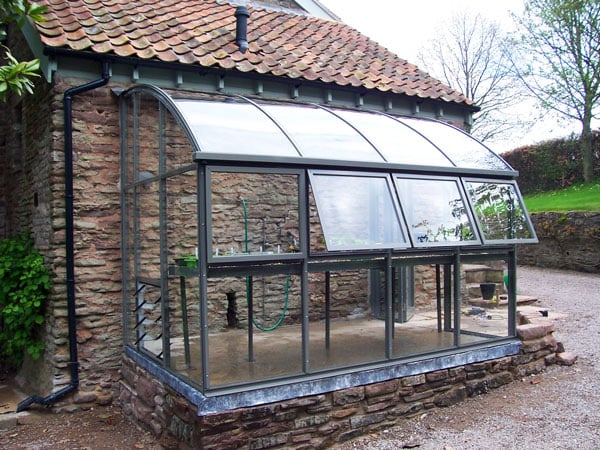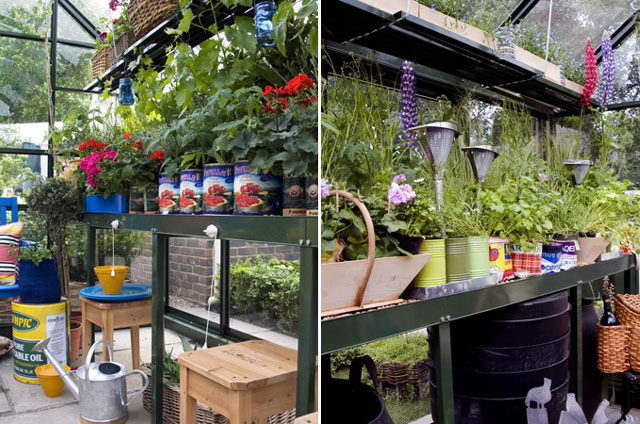Greenhouse Features
A Greenhouse is an asset to any garden. Essential for the propagation of seeds and plants, the features of a Greenhouse provide suitable growing conditions for a wide range of plants, which would otherwise be unable to survive in an external environment.
In order to obtain maximum benefit from a Greenhouse, it is necessary to acknowledge certain details when embarking on the Greenhouse construction. This will help you understand how to equip and work within your Greenhouse better.
Greenhouse position
As Greenhouses thrive under bright light conditions, it’s important to choose a sunny position for your Greenhouse structure.
Tall trees, boundary fences, and walls can create shadows that obstruct light, so thought is required as to how much sunlight is available all year round, not just during the summer months.
A south-facing position is ideal if you have a lean-to Greenhouse against a wall.
However, independent, free-standing Greenhouses are best placed east to west, in order to avoid the lattice blind effect on conventional apex Greenhouse structures and gain maximum sunlight during the winter and spring.
Greenhouse shading
You can control the amount of sunlight coming in through the Greenhouse materials by the use of shading.
Pull-down blinds with strips of reflective aluminium are popular and easy to use, as an alternative to the traditional wooden slatted blinds.
For a small Greenhouse, you can instead use a ‘paint on’ shading liquid that will last the season or shade netting that is fitted over the structure during the high season.
Once you have grown your plants a little, they need to be hardened off before going out into the garden. This means not giving them a shock by going from the hot into the cold, so incorporating a cold frame when considering your Greenhouse features is ideal. This can be an independent structure or one designed during your Greenhouse construction.
Greenhouse materials
The choice of Greenhouse materials is normally limited to either wood or aluminium, although less expensive Greenhouse structures, based on alloys and plastic, are available for the amateur market.
When choosing a Greenhouse structure, wood is a more traditional material and can appear more attractive in some gardens. However, it requires periodic upkeep and more general maintenance.
The advantages of aluminium Greenhouses are that they need virtually no maintenance, and the structural frames are thin, casting very little shade.
Aluminium, normally powder coated in a colour of your choice, may blend beautifully into the garden, especially if the Greenhouse structure can be seen from the home.
Greenhouse temperature

To make the most of a Greenhouse it is advantageous to use additional heat.
For smaller Greenhouses, it is best to invest in an electrical fan heater with a thermometer switch, in order to achieve the desired temperature.
Many commercial structures often use blown heat, but for large domestic Greenhouse structures, a hot water pipe system with a boiler powered by either gas or oil is the norm.
Thermostats for the system should be located at plant height near the centre of the Greenhouse, where they are not influenced by drafts or sidewall cooling and are protected from direct contact with sunlight and water.
These devices are usually energy saving too. Even simple models can provide different daily temperature settings, which automatically lower the night temperature of your Greenhouse and then raise it in the morning.
Greenhouse ventilation
Often the sun’s rays can cause the Greenhouse to become overheated between spring and autumn, which can lead to plants becoming stressed.
The easiest way for hot air to escape is via roof ventilation, which can be installed during your Greenhouse construction.
The cooling process is further improved with the use of louvered vents that open in the sides of Greenhouse. Automatic ventilation can also assist in providing stable temperatures.
A calculation of 25% of the floor area will ascertain the minimum amount of opening vent space that is required for your Greenhouse. Remember, if you feel uncomfortable in your Greenhouse, then so do your plants. These extra Greenhouse details help ensure your structure maintains optimum growing conditions.
Computer control Greenhouse heating and ventilation
When choosing a Greenhouse structure keep in mind that, for larger Greenhouses, there is an opportunity to utilise a computer to control the heating and ventilation.
This will have been initially programmed so each relevant sensor has been named, sited and numbered. The various required limits will have been entered to allow the system to work.
It is likely there will be different requirements to the use of the heating and ventilation controls during the course of the year.
Alteration of the set points on the computer programme will allow the Glasshouse environment to be adjusted, in order to suit the crop being grown at any given time.
It is possible to make adjustments and cross-reference the changes so that there are no conflicting settings within the programme. For general purposes, the control programme will use Day/Night settings.
It is recommended a printout be taken of alterations throughout the year as a record, and also as a guide for future requirements.
Greenhouse layout
Your Greenhouse layout can have a big impact on the growing conditions of your structure. Choosing the best Greenhouse layout is important for creating a comfortable growing space for your plants.
Walls

Consider utilising the walls of your structure when deciding on your Greenhouse layout.
Many plants can be grown against the back wall of a Greenhouse. Fruit is a popular choice, producing a large crop in a small space using traditional fruit training techniques.
Ornamental plants can also be grown in this space e.g. Pelargonium, as well as any number of climbing plants from warmer climates, such as Bougainvillea.
Benching
When planning your Greenhouse layout, some form of benching or staging is essential. Benches provide an area to support growing plants and potting.
The staging needs to be strong and capable of supporting the heavyweight of pots, laden with plants and moisture.
Freestanding benching is one of the most popular Greenhouse features and can be constructed of slatted wood (cedar) or aluminium. Aluminium staging has the advantage of longevity and requires no maintenance.
Benches should not be too wide and stand about the same height as a kitchen worktop (roughly 90cm).
Ensure they are level and there is enough room for access and to undertake work on them, fitting within your Greenhouse specifications.
Many garden Greenhouse manufacturers produce ornate staging and shelf equipment specially made for particular Greenhouses, however, there are also independent manufacturers that supply ranges to fit all Greenhouses.
Capillary matting
Capillary benches are widely available and can be easily incorporated into your Greenhouse layout. They allow crops of similar plants and pot sizes to be kept evenly watered throughout the day.
They are constructed using a normal flat bench with 5cm-raised edges. The surface is then lined with capillary matting, which goes over the side of the bench into a vat of water.
Capillary matting will draw up water and remain damp so that pots placed on the surface will maintain a steady moisture level.
Liquid fertiliser can be added to the water vat, automatically feeding and watering the plants.
Lower benches are handy for those plants that are resting, such as corms e.g. Cyclamen and tubers e.g. Achimenes (hot water plants).
These added Greenhouse details are also convenient for storing items such as watering cans, sticks for plant supports, and spare pots.
High-level shelving

A high-level shelf in your Greenhouse structure is ideal for orchids as this can mimic their natural environment, as they usually grow in trees. It is best to make sure the pots are well balanced so they will not fall off when watered.
Propagator and propagating benches
Small individual plastic propagators are ideal for limited space in smaller Greenhouses.
These are supplied with propagating trays with soil warming cables in their base, which are connected to the standard electricity supply with a built-in thermostat to enable the temperature to be varied at will and kept constant.
These are useful when raising plants either from seed or cuttings. Using the bottom heat means many seeds can germinate very quickly.
It is also possible to build your own propagator that fits the exact space available to you, suiting your unique Greenhouse features.
Construct a wooden frame with 10cm sides and place a piece of 25mm polystyrene covered polythene in the base, lay the soil warming cables on it and cover it with approx 40mm of coarse sand.
The cables will need to be connected to a thermostat and an electric supply as recommended by the manufacturer. The pots or trays are then placed on the sand, which will warm them.
To further improve on this arrangement for propagating cuttings, it is recommended a fine mist spray connected to a sensor be installed during your Greenhouse construction. This will stop the cuttings from becoming dehydrated, as well as increase the success rate and speed of rooting for cuttings.
Cleaning a Greenhouse

Cleaning the Greenhouse features on a regular basis is an essential maintenance practice.
By promoting good hygiene practices, the risk of overwintering pests and diseases will be reduced.
Various Greenhouse cleaning products are available for this task and should be used at the recommended rate.
By Barry Holdsworth.
www.barryholdsworth.com
Garden Designer & Horticultural Consultant
Article Extractions first published in The Professional Gardener.


